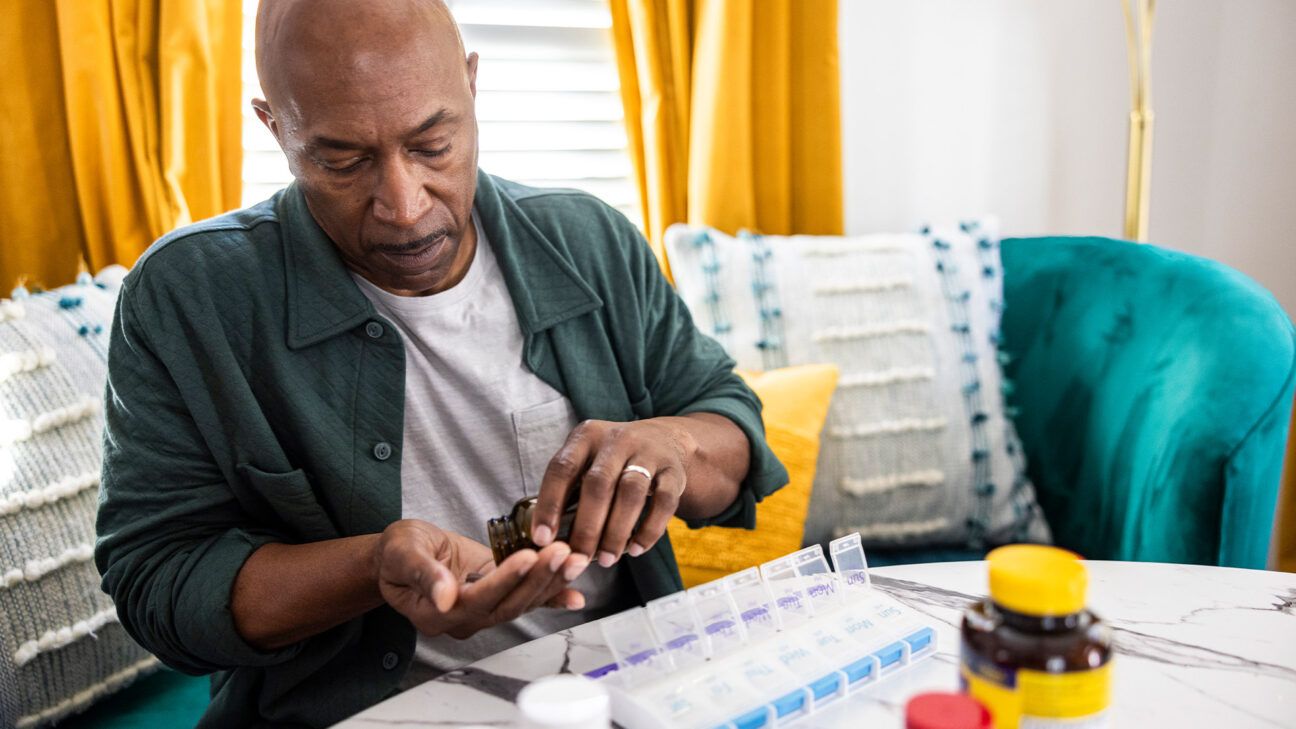Eating Vegan Diet In Pregnancy Linked to Preeclampsia and Lower Birthweight

- A new study shows women who follow vegan diets during pregnancy may have a greater risk of developing preeclampsia and giving birth to babies with lower birth weight.
- Getting enough nutrients for the pregnant person and baby can be challenging when food choices are limited due to dietary restrictions.
- Important nutrition considerations on plant-based diets include fruits and vegetables, complex carbohydrates, plant-based proteins, healthy fats and hydration.
Women who follow vegan diets during pregnancy could encounter an increased risk of developing preeclampsia (a pregnancy-related blood pressure condition) and of giving birth to newborns with lower birth weight, according to a new study.
The findings were published this week in Acta Obstetricia et Gynecologica Scandinavica.
How vegan and vegetarian diets are linked to health conditions
A questionnaire was given to 65,872 women mid-pregnancy who identified themselves as omnivorous, 666 as fish/poultry vegetarians, 183 as lacto/ovo vegetarians, and 18 as vegans.
Results showed that protein consumption was lower among lacto/ovo vegetarians (13.3%) and vegans (10.4%) than omnivorous participants (15.4%). In addition, micronutrient consumption was lower among vegans.
Vegan mothers showed a higher incidence of preeclampsia and their newborns weighed an average of 240g less.
“It is a large cohort study, and our finding that offspring of vegan mothers had on average 240 g lower birth weight compared to omnivorous and a significantly lower birthweight z-score is noteworthy,” corresponding author, Dr. Signe Hedegaard, Department of Obstetrics and Gynecology, University of Copenhagen in Denmark, told Healthline. “We found that vegetarian and especially vegan mothers had substantially lower protein intake than omnivores, and for around half of our vegan participants it was below the current recommendation.”
Hedegaard continued: “This might be a plausible explanation for lower birth weight, but we are aware that this cannot be concluded from an observational study. For micronutrients dietary intake of vitamin B12, vitamin D, and calcium were lower among those adhering to plant-based diets, but when intake from dietary supplements was added to the dietary contribution, the median intake of all vitamins and minerals was well above the recommended nutrient intake for most participants, independent of their diet.”
Although the number of vegans is very small, and that data was collected 20 years ago and may reflect different habits compared to those following vegan diets today, their findings on lower birth weight among infants born to mothers adhering to plant-based diets are consistent with more recent studies.
“The low intake of proteins and other micronutrients is in line with what has been reported in other more recent studies of vegan populations,” said Hedegaard.
It’s important to note that meeting protein requirements while maintaining a vegetarian and vegan diet can be difficult.
“Moving forward we must be aware that for pregnant women adherent to vegetarian and vegan diet obtaining sufficient protein intake can be a challenge,” Hedegaard explained. “During pregnancy and the period of breastfeeding they should be advised of having an adequate protein intake and consider appropriate vitamin supplements; especially vitamin D and vitamin B12. It might be recommended to consult a dietician, for individualized guidance.”
Further research is needed for improving evidence-based guidelines and recommendations. Due to environmental as well as animal welfare concerns there is a growing interest in a plant-based diet, and therefore this is relevant.
How a vegan diet affects pregnancy
As the study mentioned, pregnant people who follow vegan diets may face an increased risk of developing preeclampsia and of giving birth to newborns with lower birth weight.
“These characteristics may coexist for one pregnant individual, but they may not be causal (or directly related to one another),” Joy Cornthwaite, a registered dietician specializing in women’s care at UTHealth Houston, stated. “Preeclampsia has many possible causes including placenta proteins that control the health of existing and newly formed blood vessels, genetics, age at pregnancy, history of chronic hypertension, obesity, and/or nutritional deficiencies.”
Being an observational study, this research cannot prove causation but rather a potential association between a vegan diet and preeclampsia or lower birth weight. More research is needed to determine if there is a causal relationship
Moreover, research on plant-based diets have shown improvement in many of the risk factors that may contribute to preeclampsia.
“The key to optimizing the benefits of plant-based diets, especially vegan diets, is to structure meal options and eating routines to achieve nutrient-dense intake and to appropriately plan and monitor micronutrient supplementation – both during and after pregnancy,” said Cornthwaite.
The contribution of dietary restrictions to nutrition deficiencies and nutrients is not singular to veganism.
Any dietary restriction can pose a risk to the health of pregnant people and their babies, i.e. iron is necessary for oxygenation; calcium is vital to bone and blood vessel health, Cornthwaite explained. Because their diet does not include traditionally known sources of calcium like milk and other dairy products, vegans must remain consistently intentional about choosing plant sources of calcium and/or taking supplements daily.
Regarding birth weight, the study indicated that babies in the study born to vegan mothers were 240g smaller than other study participants.
“This amounts to less than half of a pound and still remains in line with average weight for babies,” said Cornthwaite. “Again, birth weight is influenced by many factors including maternal weight and genetics. Ultrasounds and regular prenatal visits allow Obstetricians to determine and personalize what weight gain is appropriate for their patient and track trends for fetal weight gain.”
Vegan mothers had a higher prevalence of preeclampsia
Achieving adequate intake of nutrients during ever-changing appetite, tastes, and aversions is more difficult when food choices are limited due to dietary restrictions, Cornthwaite explained. This could result in lower opportunities for intake, lower frequency if intake – which limits calorie intake and nutrients; and limits maternal and fetal weight gain.
“All pregnant mothers can benefit from assessment and supportive nutrition counseling. Oftentimes vegan and vegetarian mothers are not referred to an RD because plant-based diets are assumed to be more healthful, but something as small as a plan for one additional low volume, nutrient dense snack at 3pm, i.e. dried apples + nuts/seeds + almond milk, can contribute valuable calories and nutrition for mothers and babies,” Cornthwaite added.
Is one diet better than another for pregnancy?
The researchers studied four diet types: fish/poultry vegetarians, lacto/ovo vegetarians, vegans and omnivores.
“Food culture and choice is highly personal,” said Cornthwaite. “The diet that is most appropriate for a pregnant person is the diet that they choose to consume, optimized for pregnancy. This can be achieved with the help of a Registered Dietitian who will work closely with the pregnant mother and her physician to assess intake and develop a meal plan that address any challenges to achieving adequate macro and micronutrient goals based on individual needs.”
General diet recommendations for pregnant people and their newborns
Ask for a referral to a registered dietitian to assess the current intake.
“Meal plans that may be sufficient for a non-pregnant person will not be sufficient for pregnancy,” Cornthwaite stated. “Pregnant mothers are often prescribed prenatal vitamins and whenever indicated, through pregnancy labs, may be prescribed additional supplements.”
Pregnancy can also mark the beginning of food sensitivities and/or aversions. An RD can assist with personalizing substitutions that decrease nausea or other discomforts like reflux or fatigue, Cornthwaite explained.
Scheduling follow-up visits with your RD for the duration of pregnancy (and post-partum) will allow proactive discussions around taste and appetite changes to prevent deficiencies, maintain health for mother and baby, and may prevent nutrition-related complications.
“Every pregnant person should feel supported and safe to discuss her personal beliefs, culture, and needs around food. I often begin to work with mothers by encouraging a self-assessment of intake based on a plant-based plate method – no judgement, just establishing a baseline,” said Cornthwaite. “This allows the pregnant mother to identify areas and options for improvement and to practice shared decision-making when having conversations with her clinical team.”
She explained, that important nutrition considerations on plant-based diets can be grouped by food and nutrient sources:
- Fruit and Vegetables – valuable sources of water-soluble vitamins, sources of hydration, calcium, magnesium, potassium, and other blood pressure-improving nutrients, as well as protein.
- Complex carbohydrates for fiber and energy.
- Dairy substitutes for calcium.
- Plant-based proteins like beans and legumes
- Healthy fats
- Hydration
Takeaway
Women who follow vegan diets during pregnancy may have a greater risk of developing preeclampsia and giving birth to babies with lower birth weight, a new study showed.
Meeting proper nutrient requirements for the pregnant person and baby can be hard if dietary restrictions are too strict. However, it is important to note that the diet is not the problem, but the ability to maximize the benefits of a plant-based diet.
While diet is a personal choice, there are certain nutrition guidelines on plant-based diets that should be taken into consideration. That includes eating fruits and vegetables, complex carbohydrates, plant-based proteins, healthy fats and staying hydrated.






